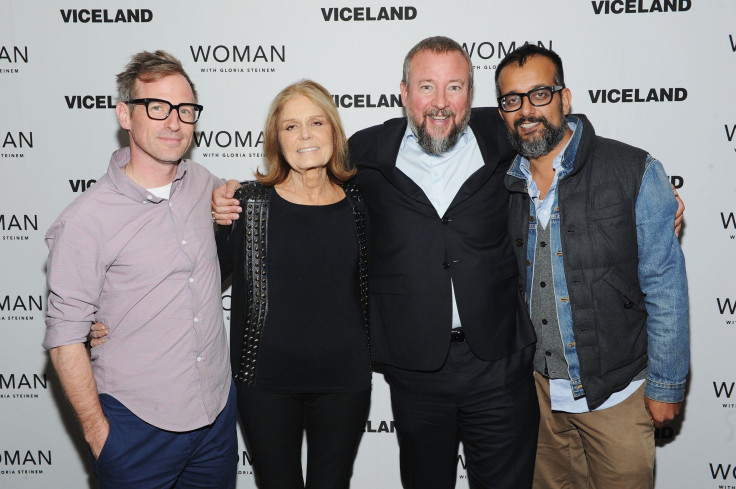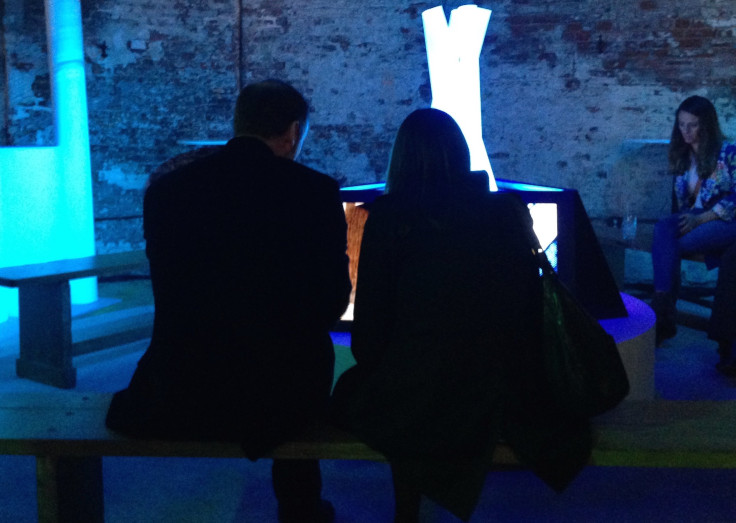The Internet Finally Stops Trying To Be TV At The Digital NewFronts 2016

Shane Smith began his speech three sheets to the wind, lying prone on stage, surrounded by dozens of breathless hipsters with the same haircut and beard, smartphones illuminating the darkness.
“I’m the Russian bear that s---- on the floor for nickels,” the CEO of Vice Media grumbled once he was vertical again, admitting he’d had “a few ales.” There was a recitation of lyrics from Sham 69’s “If the Kids Are United” that turned into scream-singing backed by a full band.
Of course this would happen at a Vice presentation to its advertisers. For the digital media darling known for edge and hipness, how else could it have gone? But while Smith may have qualified as the drunkest chief executive, Vice wasn’t the only company to finally break the mold at this year’s “NewFronts,” the annual two-week event where digital media companies make splashy presentations to try to impress advertisers. On the contrary, this was the year the internet finally realized it doesn’t have to pretend to be TV anymore.
Previous years’ NewFronts had mostly hewed to the same format as the presentations TV networks give during their “upfronts” week in May: A large group of media buyers are assembled somewhere like a theater or an empty warehouse posing as an event space. An executive talks about how “noisy” or “disruptive” or “sticky” their content is. Dead-eyed stars of new series are trotted out to monotone a few lines or make an ill-conceived joke. There’s an after-party where more “talent” is present so that ad buyers can gawk and take “selfies.”
Part of the reason the new kids of digital media didn’t stray much from that formula lies in the reason the NewFronts were born. The whole idea started at Digitas, now DigitasLBI, a unit of ad giant Publicis and was created as a showcase to introduce the agency's biggest advertisers to the burgeoning world of digital video. The idea quickly took off and soon YouTube, Yahoo, Hulu and others were throwing their own "NewFronts" alongside that very muched aped the format of the famous TV "upfront" presentations, where billions of TV ad dollars come up for grabs each spring.
“I think initially they wanted the same kind of attention as the networks,” says James Zayti, group director of Hyundai Media for the ad agency Innocean. That meant going for the same type of razzle-dazzle buyers were used to.
In the TV industry, the upfronts are a tradition for two reasons: since TV ratings are finite, advertisers have long sought to reserve time in advance, and since traditionally broadcast TV rolled out its new schedules in the fall, spring was the right time for advertisers to get a sneak peek and lay down their chips.
But in the digital world, the number of eyeballs is, theoretically, near-limitless, and there’s no set airing schedule, so there’s no need to make big deals all at once with major buyers as there is in television. That said, the digital version of the upfronts found their own reason to exist: the world of digital video is so vast advertisers feel they need a these Newfronts just to keep up. Indeed, the digital bonanza, which is now run by the Interactive Advertising Bureau, continues to grow, packing a rather fatiguing 37 digital shops into just 10 days.
There was a sense this year among the bigger players, though, that they could perhaps stand out from the growing crowd by deviating from the typical formula. Even some of the smaller ones, like first-timer Great Big Story, CNN’s new digital video shop, decided not to hew to tradition.
“I’d been to too many of these — as a client, as a publisher,” says David Spiegel, head of sales and brand integration for Great Big Story. “And I come from a world that’s all about entertainment and glitz and glamor. But for us to make an impact, we had to let people have their own time and give an experience.”

So Great Big Story had everyone roam around free-range, eating, drinking and looking at videos on the GBS app on iPads and monitors strewn around the room. The only real sales pitch was a very short speech from CNN chief Jeff Zucker.
Vice, as noted above, simply threw a party. AOL attempted to create a sort of “experience,” with buyers walking through various “content exhibits” before Demi Lovato and Snoop Dogg performed for them.
Still, several big distributors and studios, like YouTube, Fullscreen and AwesomenessTV, felt the need to make outlandish claims with respect to TV, saying their large, young audiences are bigger and better than TV’s, a comparison that makes little sense.
“Digital is still sort of the Wild West — everything is measured differently,” explains Madison Wojciechowski, senior director of digital and social at marketing agency UEG and an attendee at many, many NewFronts. “But TV is a common language, so it’s easier to make comparisons.” Even if said comparisons are apples to hand grenades? “Even if,” she says.
The shift away from the standard TV-esque upfront presentation can be a double-edged sword. “There are some events where you’re not totally sure what they’re pushing,” Wojciechowski says. “It’s fun to see people dancing and enjoying themselves, but you do kind of walk away from some of the parties wondering, ‘What do we have to look forward to?’ ”
And though buyers do eventually get all the information they’re looking for, what Wojciechowski and other digital marketers are really looking for now is some measure of accountability. One of the best measures of performance when it comes to video is ordering up more episodes, but all too many shows announced at a digital NewFront either never see the light of the screen or quietly come and go. “There weren’t too many renewals from series announced last year,” Wojciechowski says. “I want to see the announcements have follow-up, in terms of performance.”
That kind of buy-in is necessary because there is some measure of scarcity in the digital world, Spiegel points out, which can sometimes mean TV-level prices.
Yes, you can buy a big basic package of YouTube views, but high-quality content, the stuff that isn’t just remixed Vine videos or nutshot compilations, is actually a little rarer — and more expensive. Great Big Story, to allow Spiegel to use his own shop as an example, publishes three to five videos a day, and therefore does not have unlimited ad inventory.
The raison d’être for the NewFronts ends up being a bit of a tautology: Because the volume of digital shops is increasing at a rate that might soon outstrip the number of eyeballs available to view their videos, advertisers need these kinds of presentations simply to know what the hell all of these places are even about. “It isn’t even about a sales pitch as much as finding out what they do,” Zayti says.
That means any resulting deals are timing-agnostic. YouTube and Magna Global, the ad-buying arm of media giant Interpublic Group of Companies, inked a deal for $250 million of Magna’s clients’ marketing spend (from October 2016 through December 2017) a couple weeks before YouTube even took the stage at its NewFront.
And yet while digital is now an essential part of every agency’s strategy, there’s still something missing, as far as advertisers are concerned. “Everyone is still looking for and wanting that big breakout digital hit,” Wojciechowski says.
© Copyright IBTimes 2025. All rights reserved.




















